Terry’s a twirler
An accomplished swirler
A polished curler
Magic with the ball
He never lets it fall
At all…
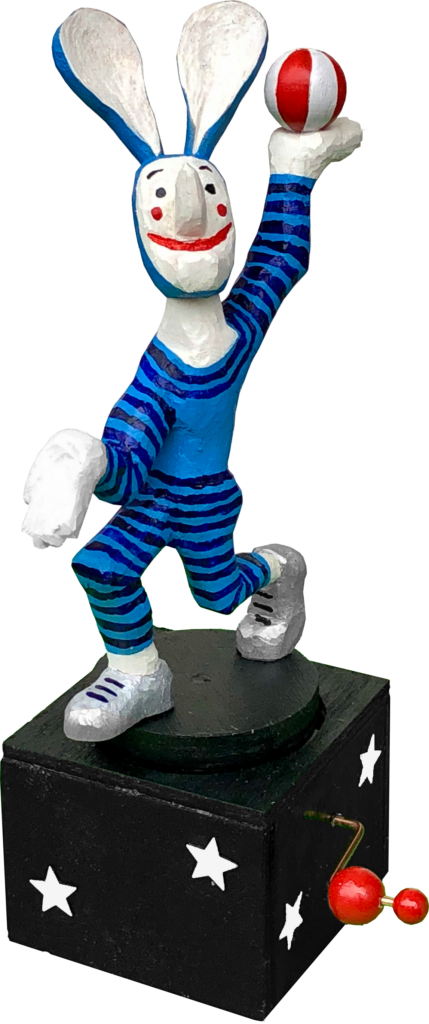
What was the brief and how did it change?
I started out with the idea of a dog chasing its tail on a small base. Having made a base with a crank to spin the turntable on the top, I then decided that the dog was a bit boring and that something more interesting was required.
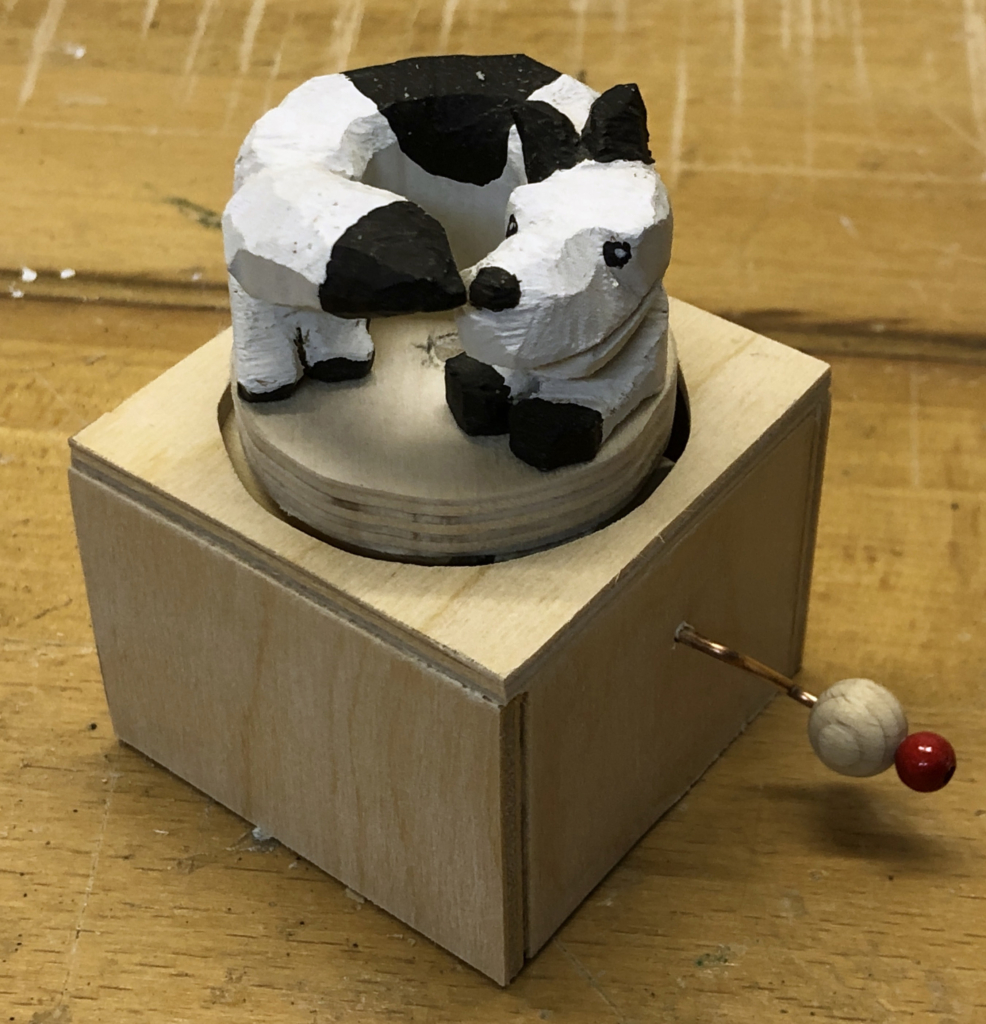
A few pencil sketches later and I settled on a figure doing some sort of Victorian dance, with its arms diagonal making a more interesting movement as the turntable rotates.
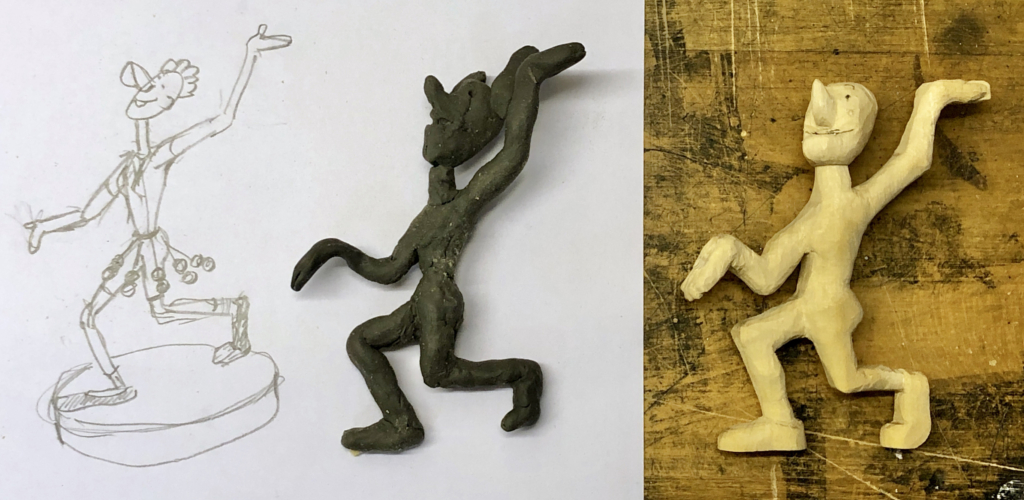
Adding long rabbits ears emphasised the movement and a ball precariously perched on the top hand looks as if it might fly away at any moment. I’m not sure exactly what the result is but it was fun to make.
Making
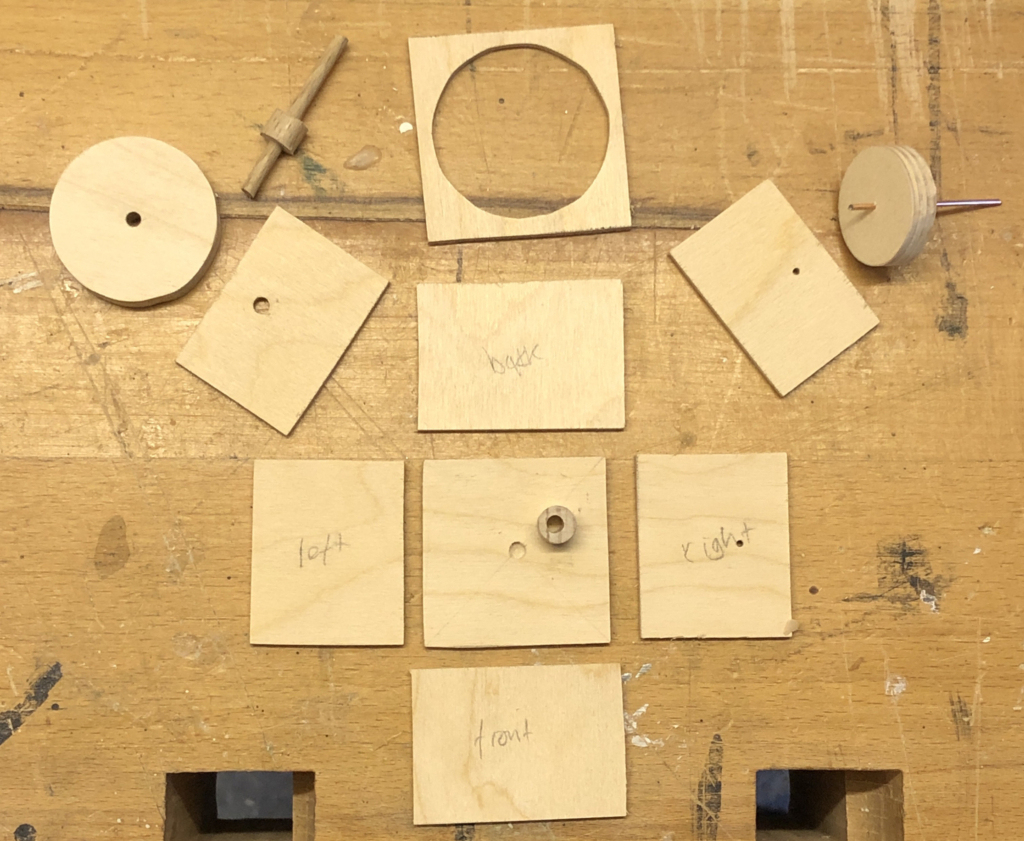
The parts for the base are mostly made of 3 mm plywood. The finished base is 55 wide x 55 deep x 43 mm high. The 15 mm diameter drive wheel and the 23 mm diameter turntable are made of 8 mm plywood. Using thick wood for the drive wheel increases the surface area in contact with the turntable thus providing more reliable operation.
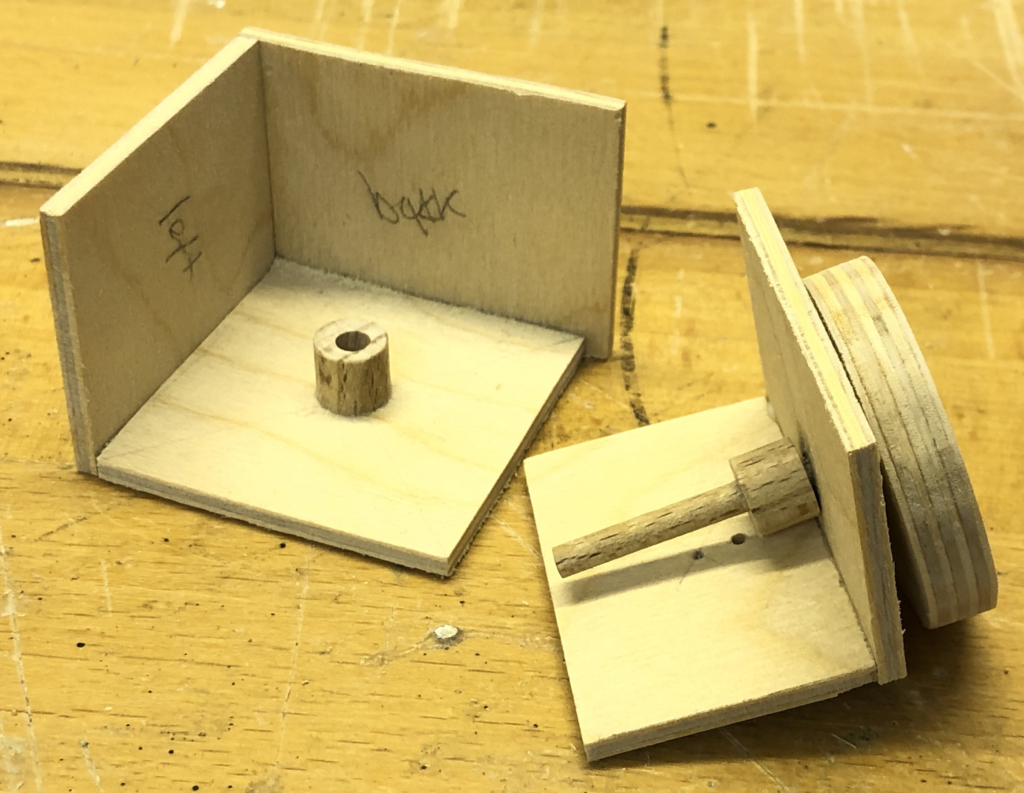
The dowel serving as the axle for the turntable rotates freely in a bearing glued to the bottom of the base. A wider piece of dowel is glued to the axle to prevent it from being completely removed.
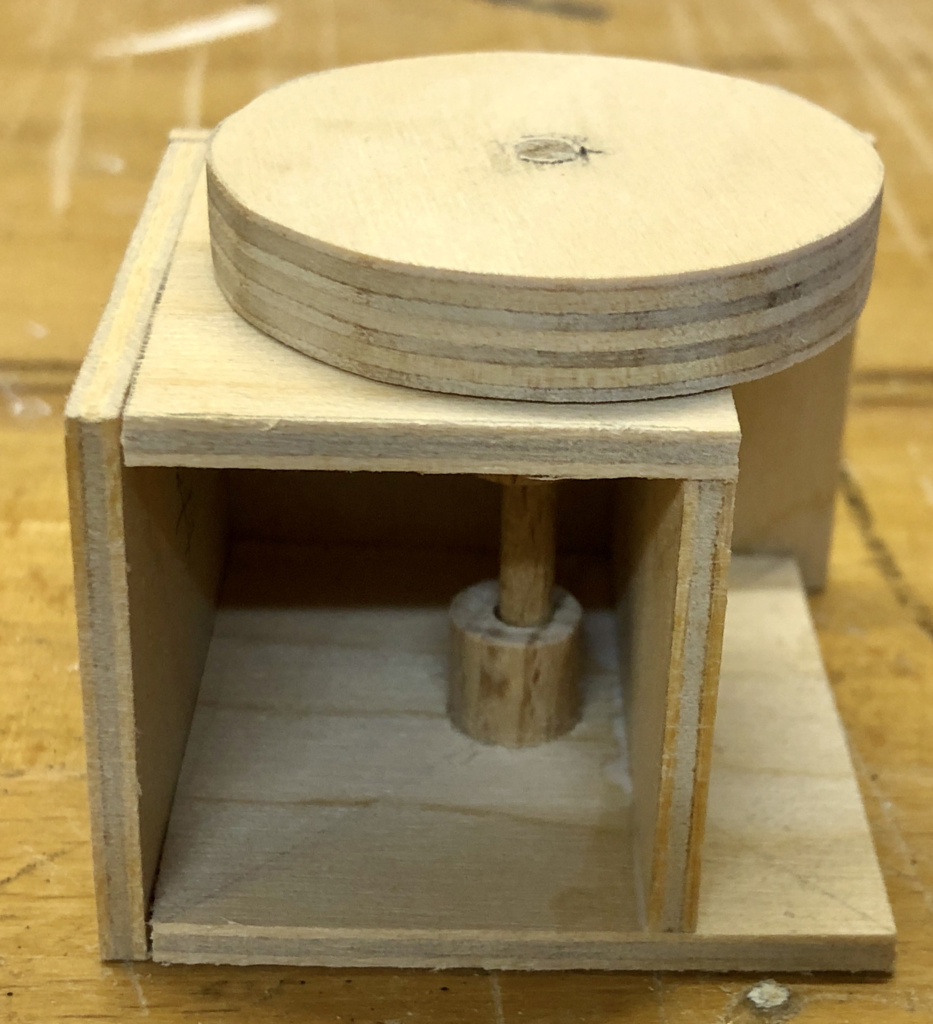
When these two pieces are glued together, the turntable can turn but cannot fall out.
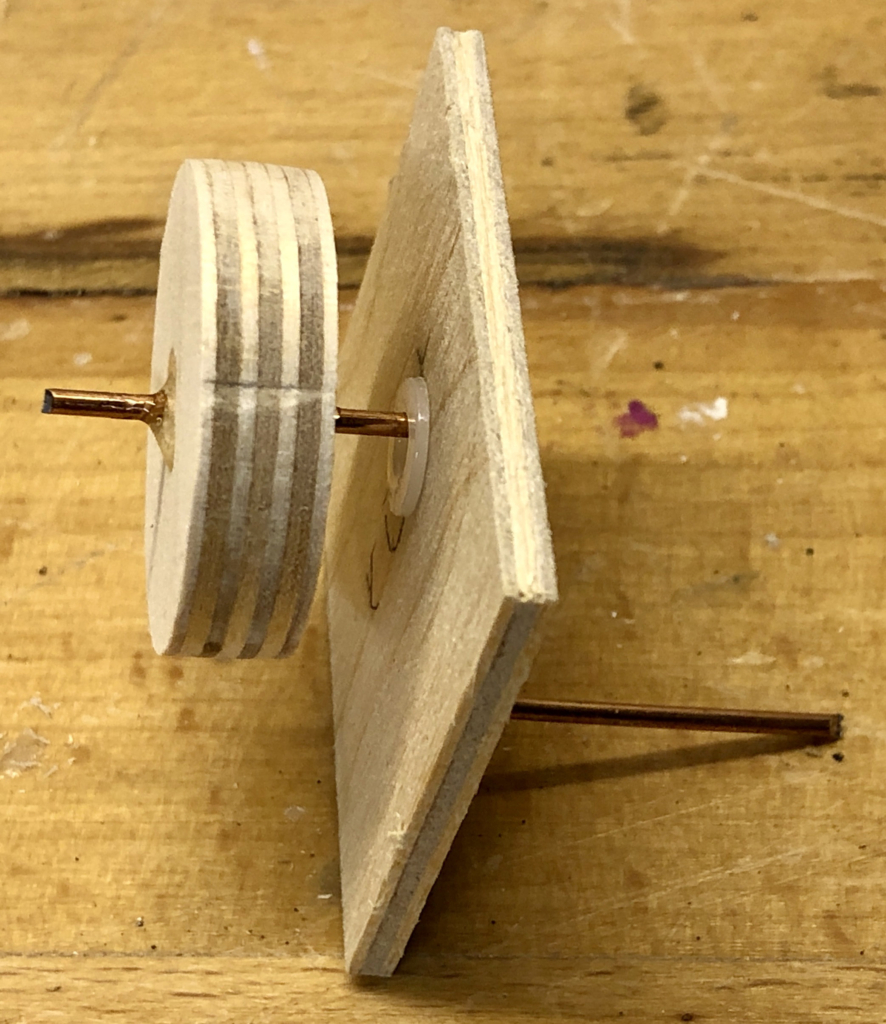
The crank is made from a piece of bent brass rod and this is glued to the drive wheel using 2-component epoxy resin adhesive.
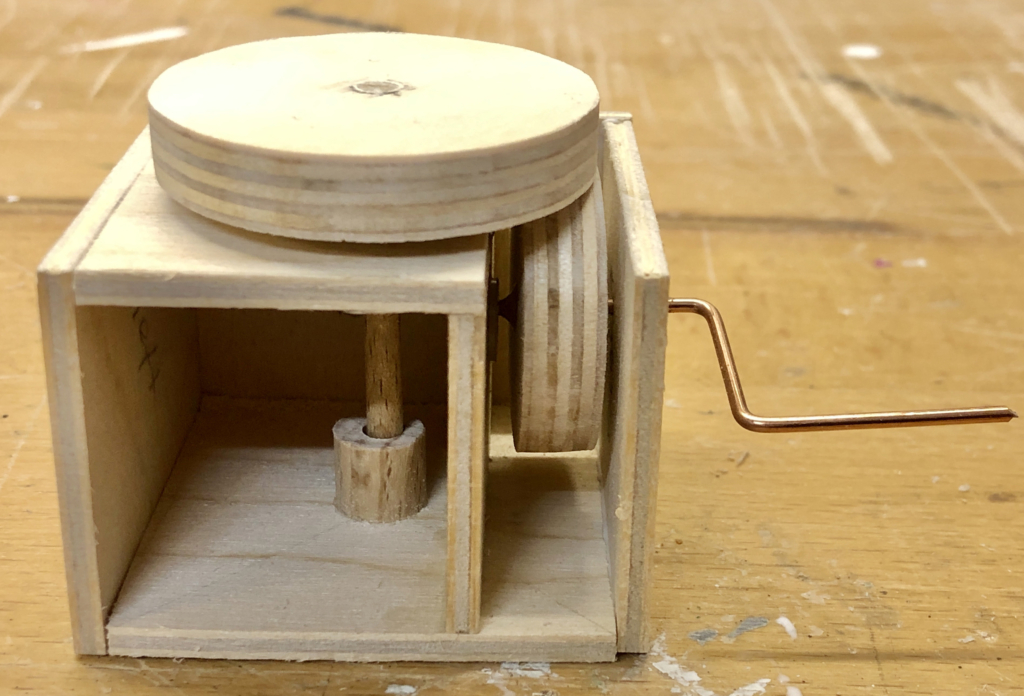
When the drive wheel is fitted, it lifts the turntable so that it no longer rests on the top piece of plywood but sits snugly on the drive wheel.
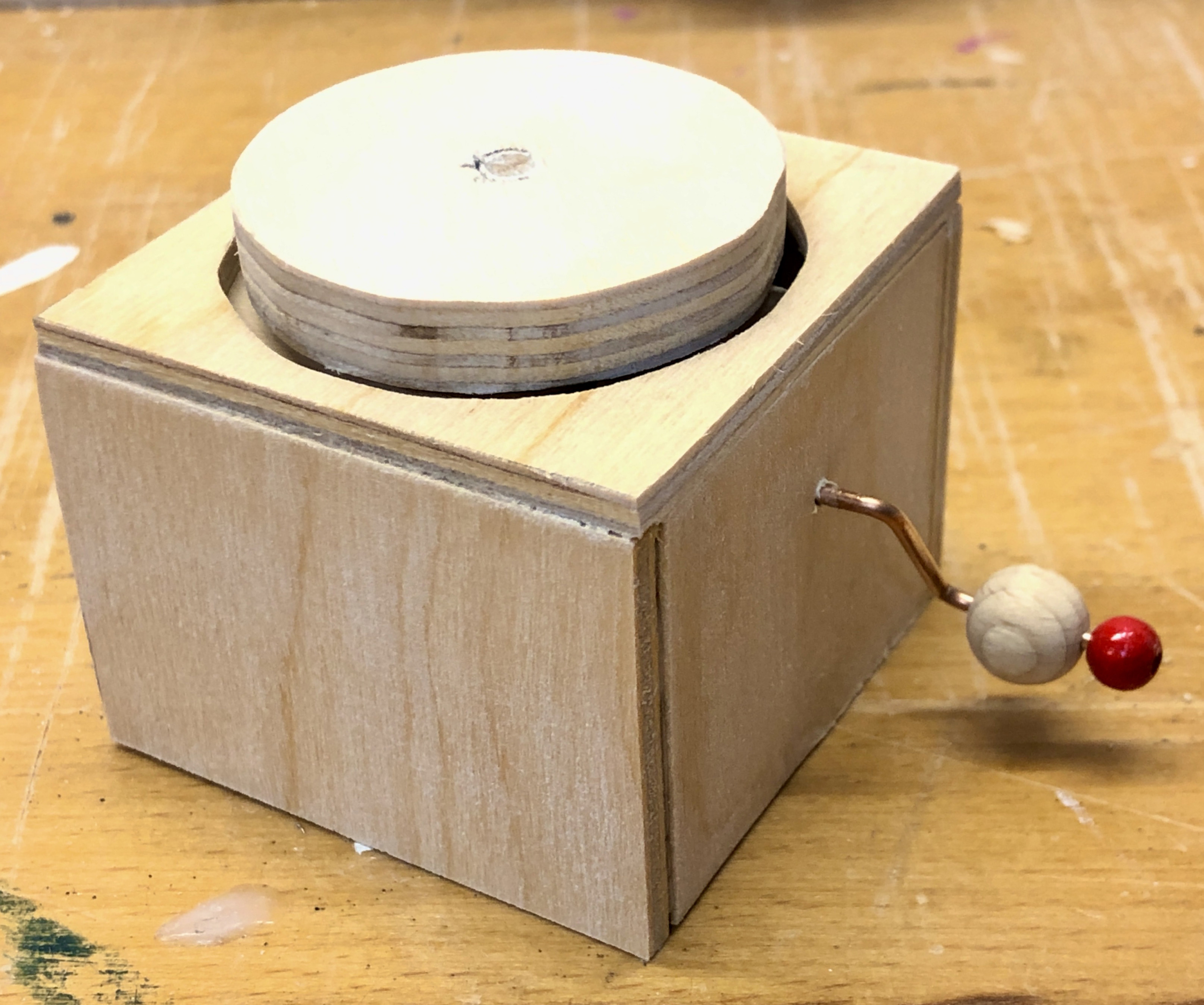
After checking that everything moves OK, the final side piece and the top can be glued in place. Two wooden spheres are fitted to the crank handle. The large ball turns freely while the small one is glued in place to prevent the large ball from falling off.
After carving and painting the figure, it can then be pinned onto the turntable with short pieces of 3 mm dowel and glued in place.
Final Reflections
Recently aiming to make smaller pieces, I was pleased that it’s possible to make a comparatively small base with a reliable, crank-operated turntable. Although music boxes often feature a ballerina turning on tip-toe, I feel that just turning a figure without it “doing” anything else means that the figure has to be more interesting.
Twirler Video
Link to video https://youtu.be/wQoWH47zrHs
Images
Download the images from here https://www.wordwise.de/Twirler_images.zip
